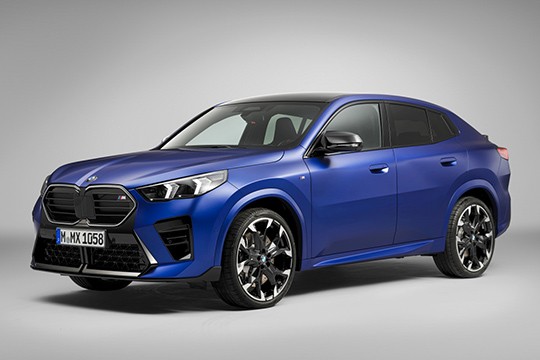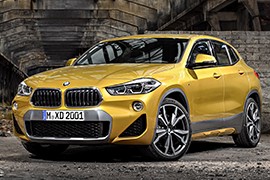BMW X2 Models/Series Timeline, Specifications & Photos
First production year: 2018
Engines: Gasoline, Diesel, Mild hybrid, Hybrid
Body style: SUV (Sports Utility Vehicle)
BMW introduced the second generation of its smallest sport activity coupe (SAC) vehicle, the X2, in late 2023 for the 2024 model year, continuing the success story opened by the X2’s first generation that was unveiled in 2017.
With an increased demand for small-sized, stylish crossovers suitable for urban environments, BMW considered that the X2 could be an excellent alternative. And it was for many customers. Even if it was mostly a re-shaped BMW X1 or Mini Countryman, the coupe-shaped vehicle attracted enough customers to convince the German automaker that it deserved a successor. As a result, six years after the introduction of the X2 on the market, BMW unveiled the second generation for it, a vehicle that was available with either an internal combustion engine under its hood or an all-electric drivetrain named iX2.
While it still shared its underpinnings with the X1, the 2023 X2 boasted a sportier image than its sibling. The front fascia revealed a new approach for one of the brand’s most important design elements, the kidney grille. BMW dropped the idea of creating tall and narrow ones but wider ones. To further emphasize it, the automaker offered the option of an LED strip that surrounded it. On the upper sides, the designers placed the LED headlights (with an option for adaptive LED ones), while underneath, it offered an option for two bumpers, depending on the packages. The M-package boasted one with a broad center air intake flanked by functional scoops, plus a splitter for the iX35 M version. From its profile, the low greenhouse with a roofline sloped back behind the rear doors emphasized the car’s sporty look despite being a crossover. Finally, at the back, the LED taillights created the image of a wider vehicle. But it was not just an illusion since the X2’s second generation was bigger in all dimensions than its predecessor.
Inside, customers could get the car with bolstered or high-bolstered front seats and a bench seat profiled for two in the back. The driver fronted a digital instrument cluster complemented by the iDrive’s infotainment system touchscreen placed atop the center stack. A tall center console separated the driver from its side passenger, creating two distinct compartments at the cabin’s front. In the back, even if the bench seat was profiled for two, it was fitted with three headrests and seat belts. Furthermore, the split-folding seatback (40/20/40) extended the 560-liter (19.8 cu-ft.) trunk space. This was one of the most significant improvements over the X2’s first generation, which suffered from a small luggage area.
Right from the start, the X2 was available with a choice of diesel and gasoline engines, with front-wheel drive or all-wheel-drive, and all versions were fitted with eight-speed automatic transmissions and mild-hybrid systems that improved fuel efficiency. The range-topper version of the ICE-powered X2, the iX35M, was powered by a two-liter turbocharged gasoline unit that offered 300 PS (296 hp), while the base model featured an inline-three turbocharged with a 170 ponies (168 hp) spark-ignited powerplant.
Based on the same platform as the MINI Countryman, the BMW X2 was the smallest Sports Activity Coupe from the German stable. It was the coupe version for the X1 SUV.
The crossover market was the next to grow fast after the SUV segment. BMW decided to act in that segment as well, introducing the first generation of the X1 in 2008, followed by the second generation in 2015. For the 2015 generation, the management decided to build a sporty version as well.
Even though the X2 was the sporty version of the X1, it didn't have any exterior panels shared with its sibling. There was a new front fascia, with a taller bumper and narrower headlights. From the side, the car looked more like a hatchback with higher ground clearance. It was the only BMW in the modern era to feature the company logo on the D-pillars.
Inside, the X2 was good for four adults, but the rear seats were not so spacious as in the X1. Since the car was built on a front-wheel-drive platform, it offered more interior legroom for all passengers, but not too much headroom for the rear ones due to the sloped roofline. The dashboard featured a floating infotainment screen on top of the center stack. The instrument cluster featured two round dials and a TFT screen for additional information. The trunk was smaller, but it featured an underfloor additional storage area.
The X1 was fitted with diesel, gasoline, and hybrid engines. Depending on the option, they were mated as standard to a 6-speed manual or with an automatic transmission. It was offered with front or all-wheel-drive systems.

